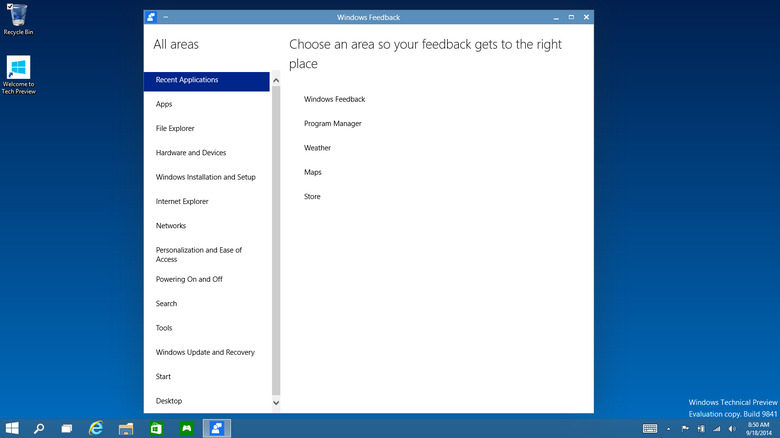How To Stop Windows 10 From Constantly Bothering You About What's Bothering You
Earlier this month, Microsoft unwittingly angered a significant portion of its user base by publishing frightening specific statistics about Windows 10 usage. The fact that Microsoft has access to this data wasn't much of a surprise, but the lack of tact continually amazes users who are begging the company to be more forthright about its data collection.
Microsoft wants to know what bugs you about Windows 10, but sadly, Microsoft can't even get that quite right.
READ MORE: 25 hidden iPhone features that are really, truly hidden
One of the pillars of Windows 10 is the ability of users to provide feedback to Microsoft about a myriad of issues they'd like to see solved or features they'd like to see added. In order to collect this feedback, Microsoft has provided users with a first-party app, but as with many other elements of the OS, the app is turned on by default, as gHacks notes.
What this means is that every once in a while, a prompt will appear on your screen without warning. Depending on how you use your computer, you might never see it, but if you upgraded to Windows 10 last year, chances are you have at some point.
Considering how close Microsoft came to releasing a genuinely fantastic piece of software, it's important to provide feedback to ensure that Microsoft knows what we appreciate and what we want to see changed, but if you would rather do it in your own time than whenever the Windows Feedback app deems it necessary, you can turn the automatic notifications off.
- Click on the Start button and open the Settings menu
- Select Privacy > Feedback & Diagnostics
- Under the Feedback frequency header, you can change when Windows asks for feedback from Automatic to Always, Once a day, Once a week or Never.
Even if you choose Never, you can still provide feedback manually by opening the Windows Feedback app and clicking the Add new feedback button.
